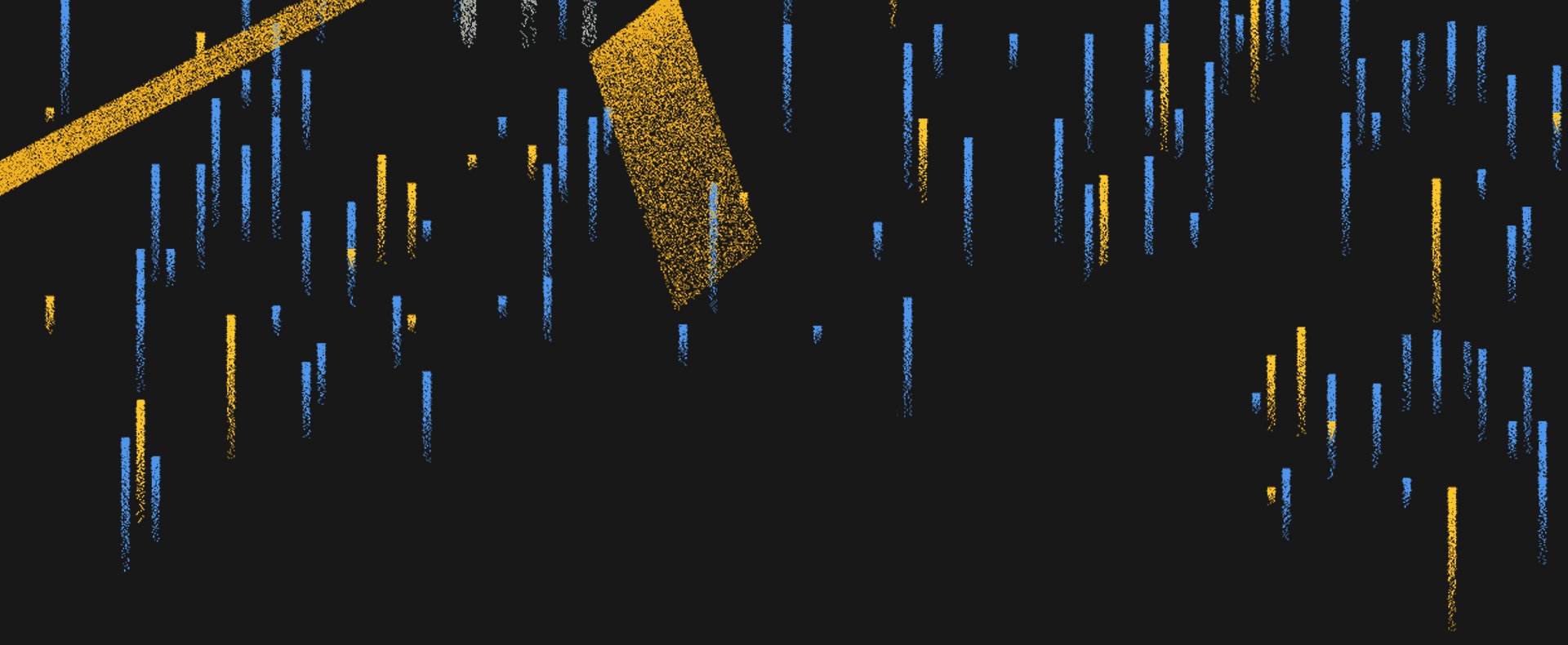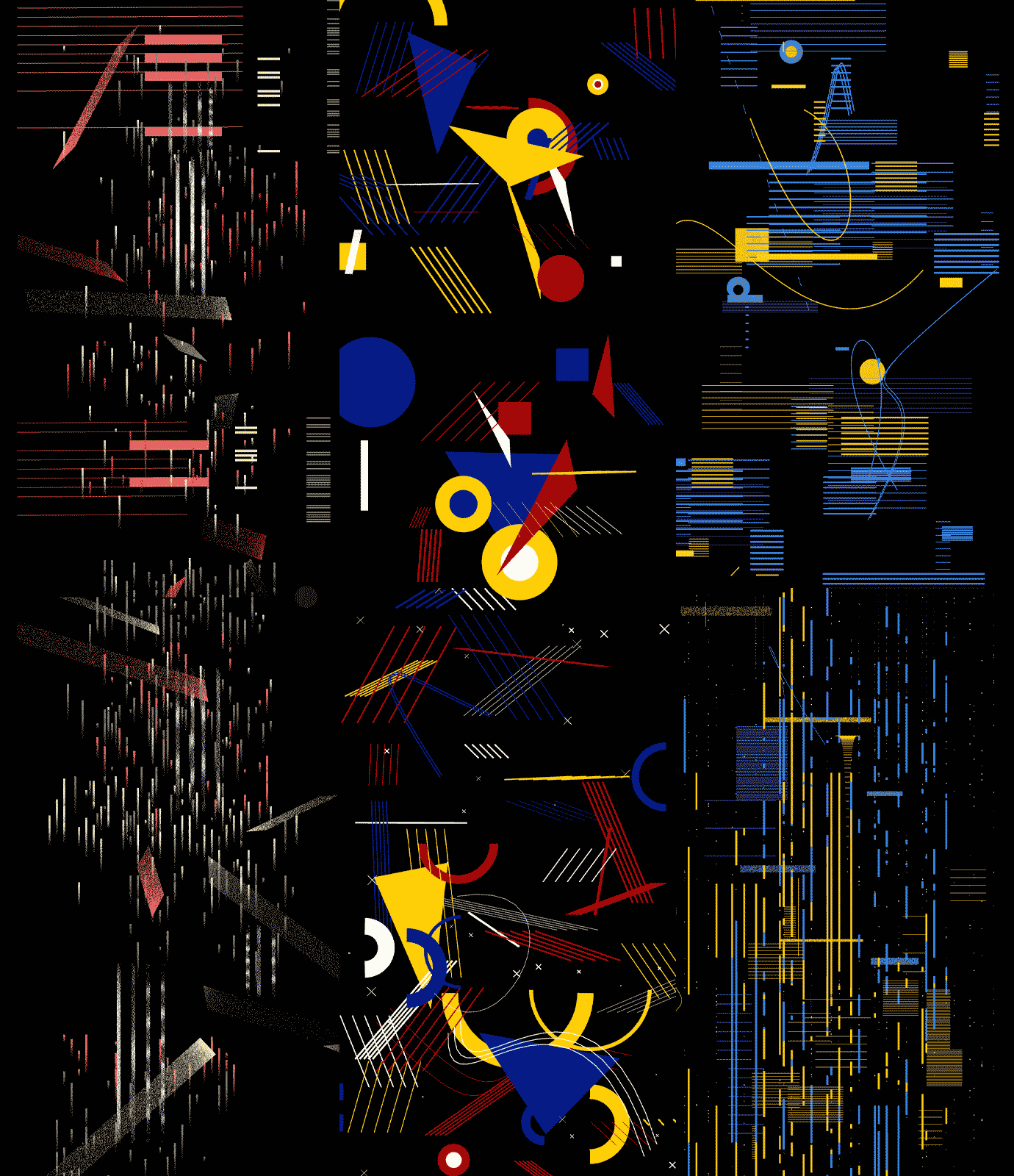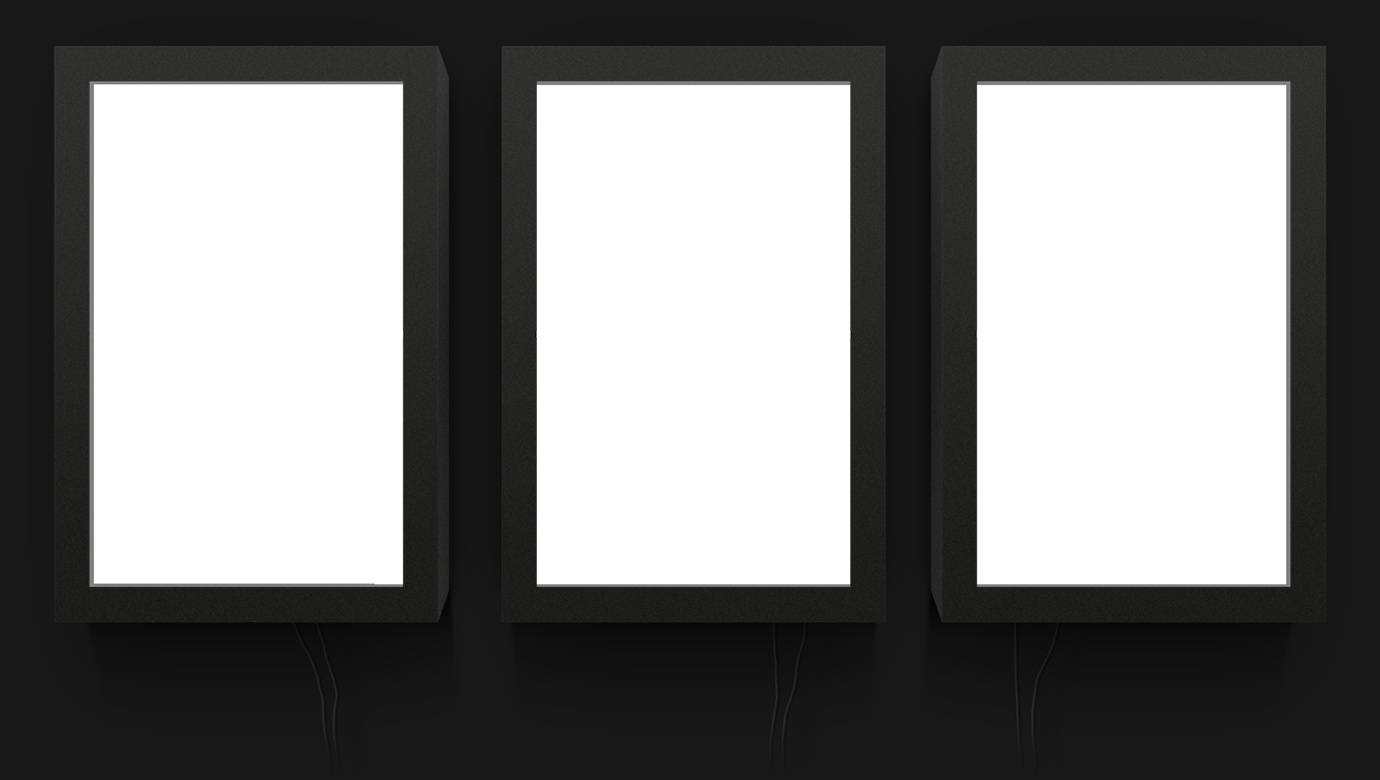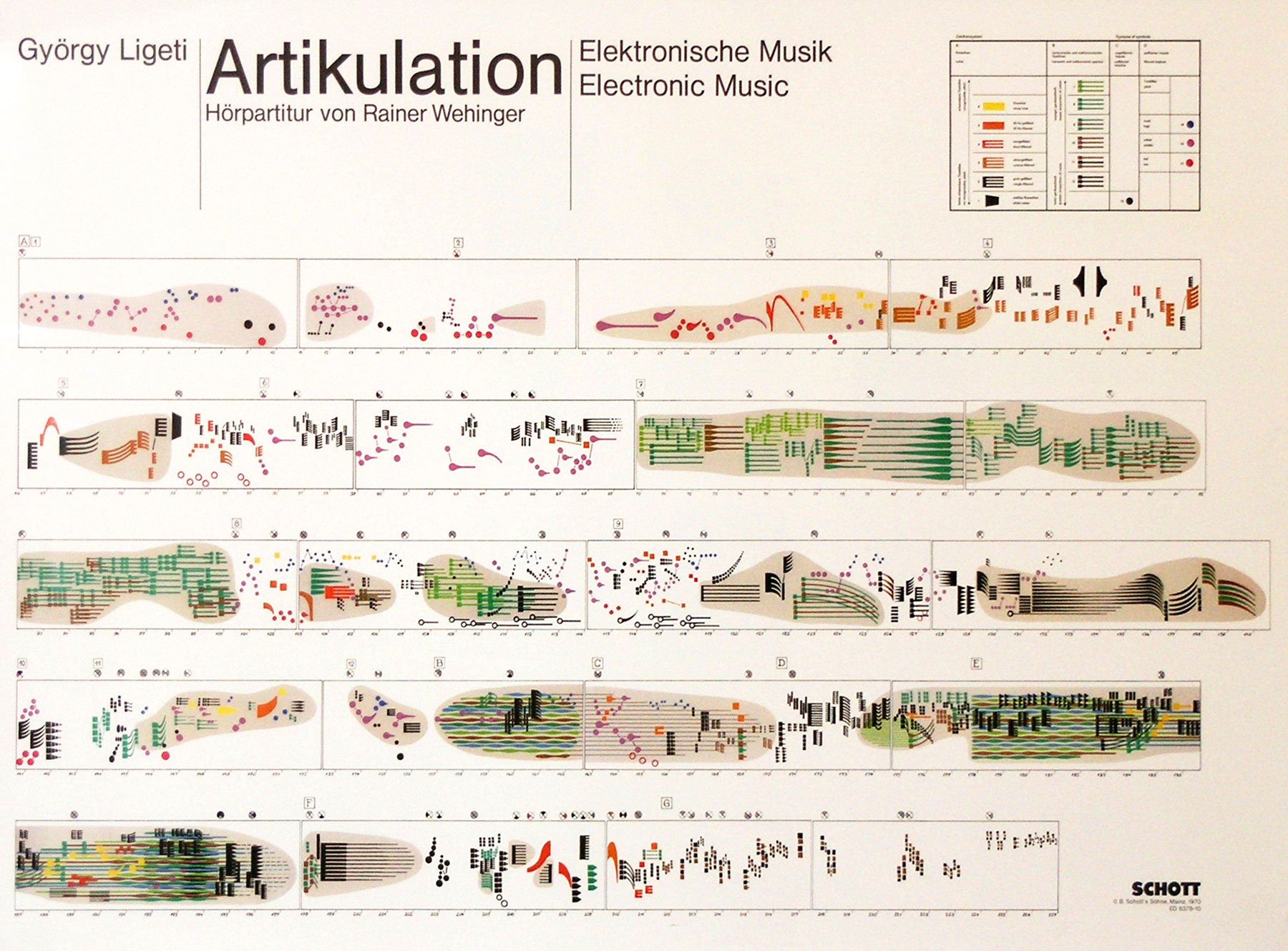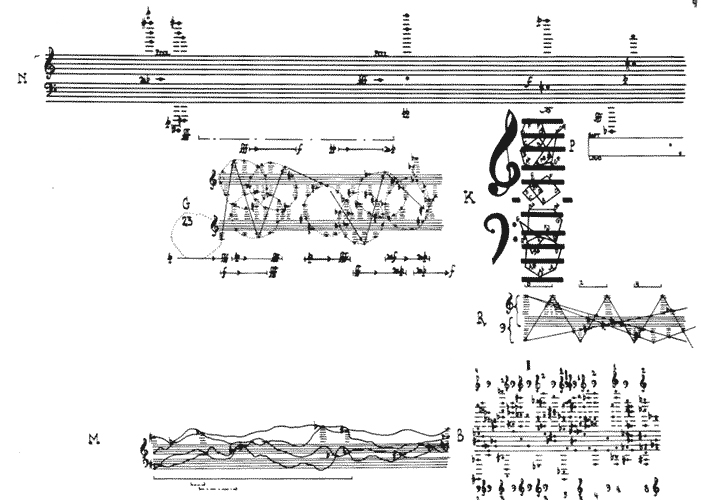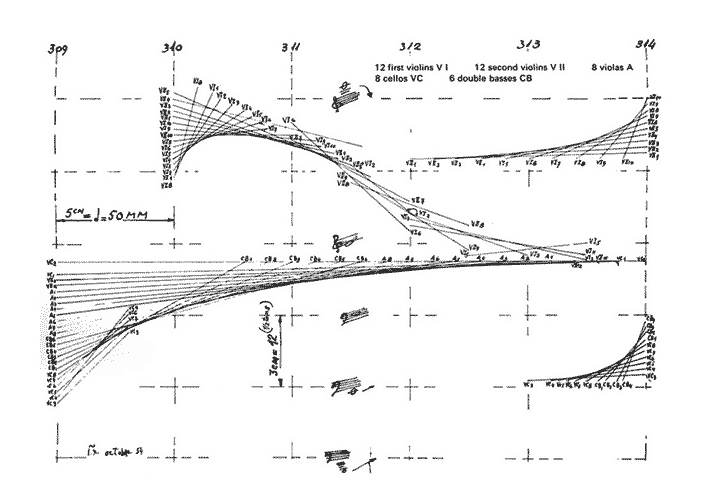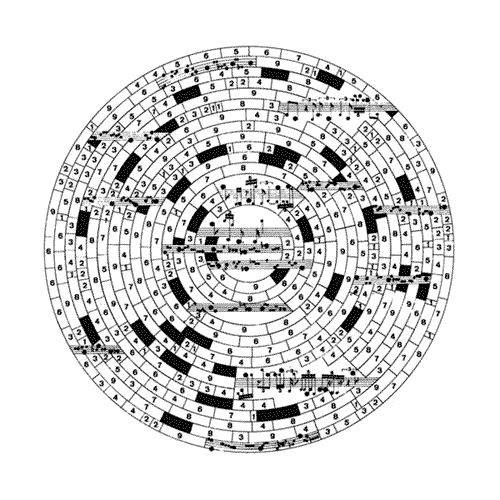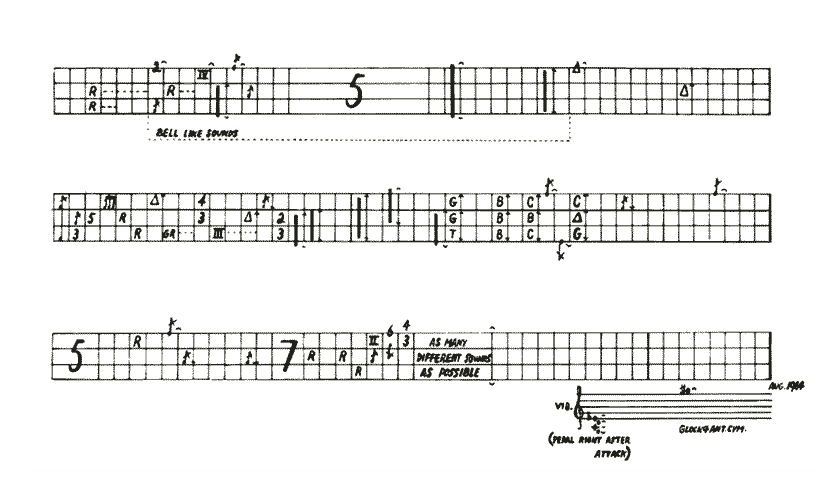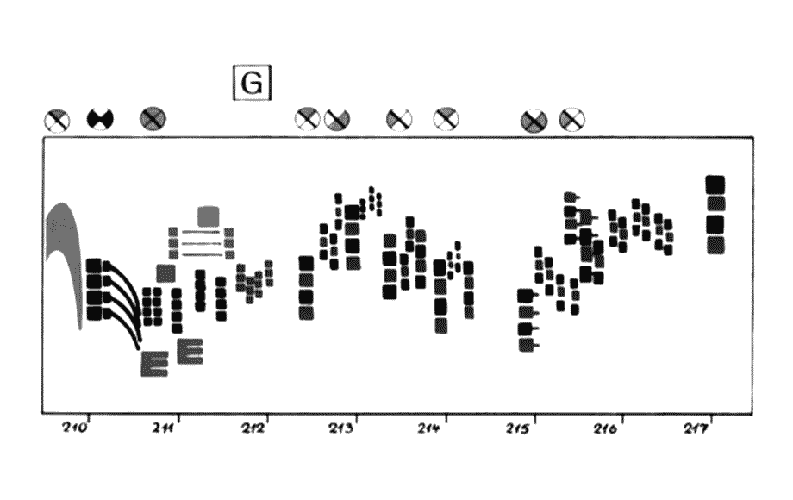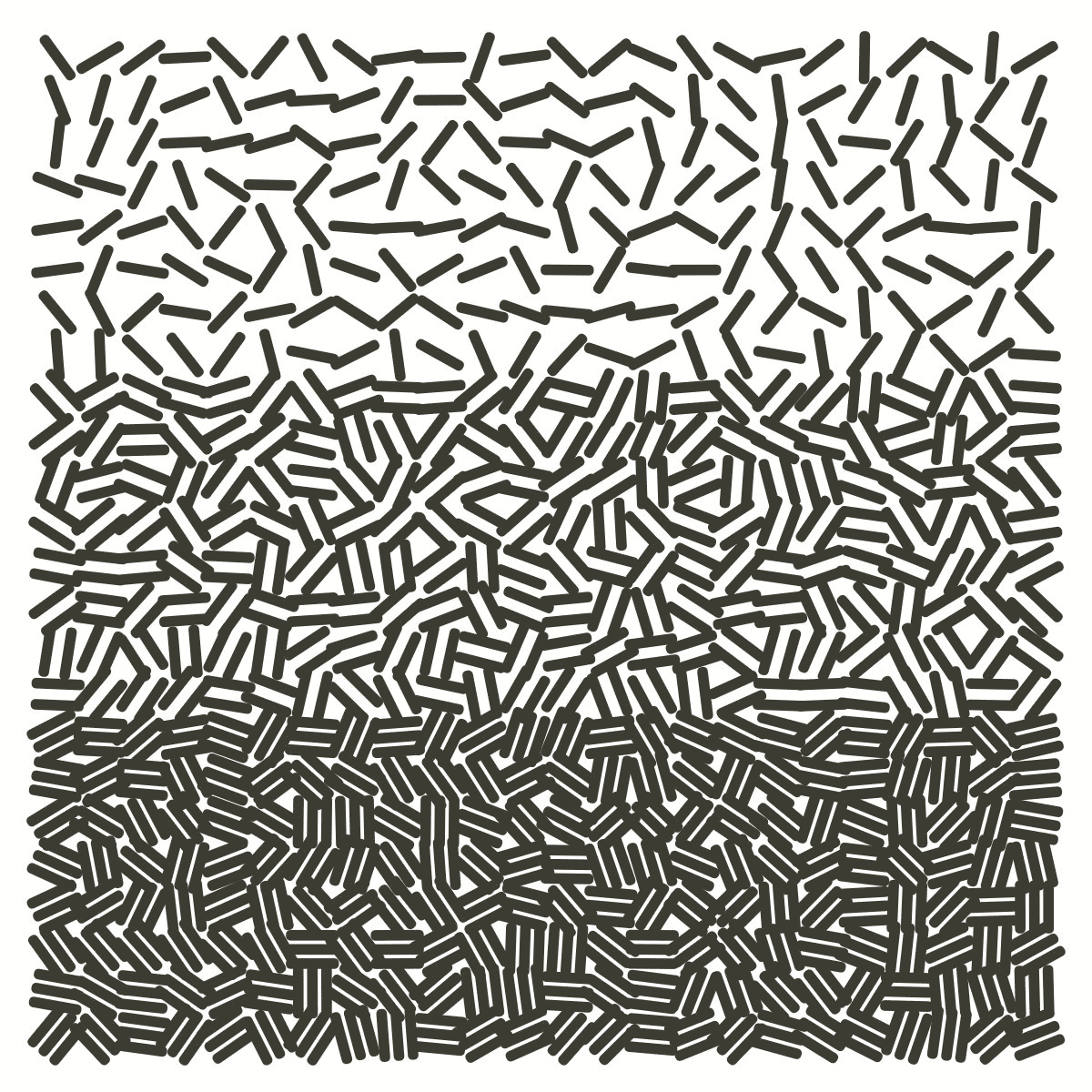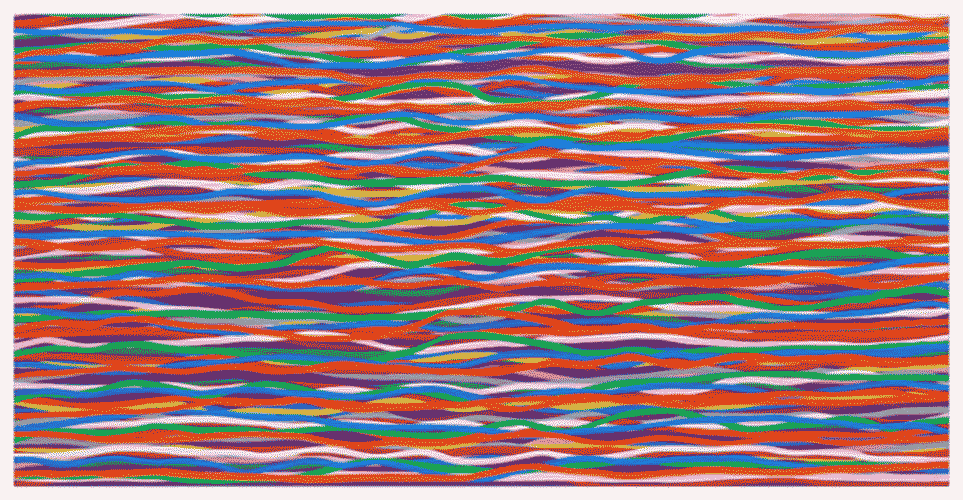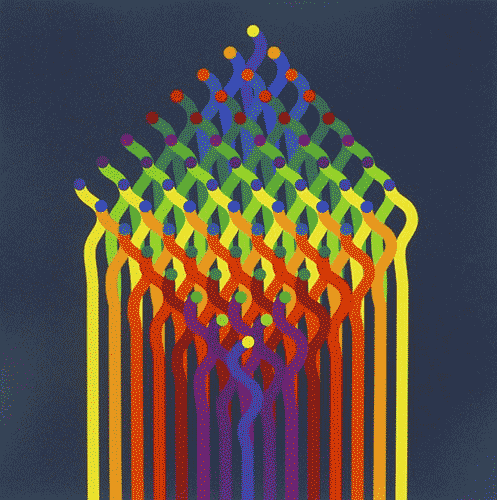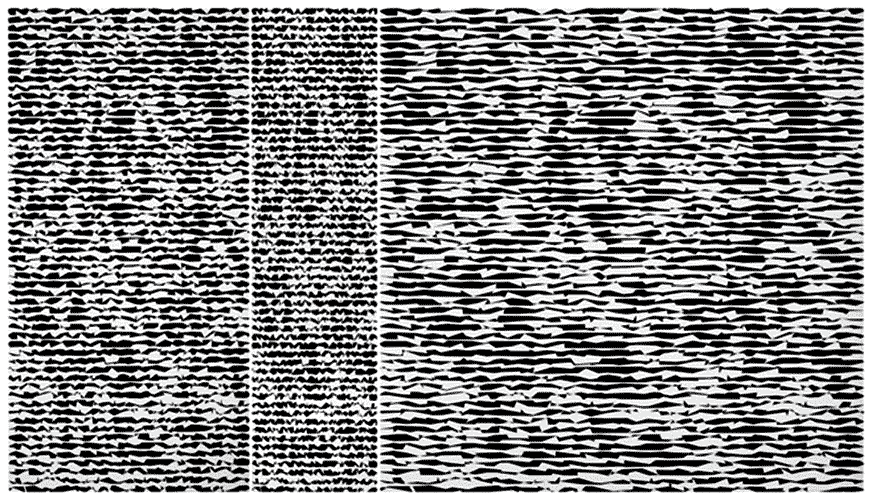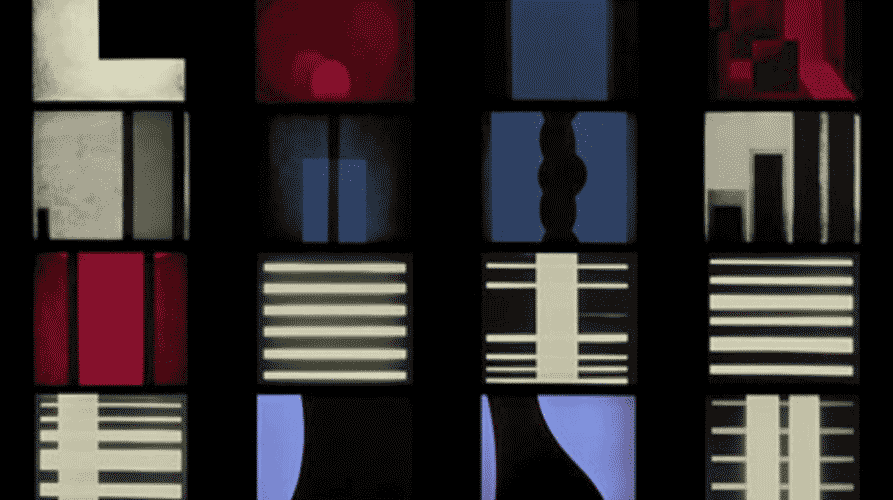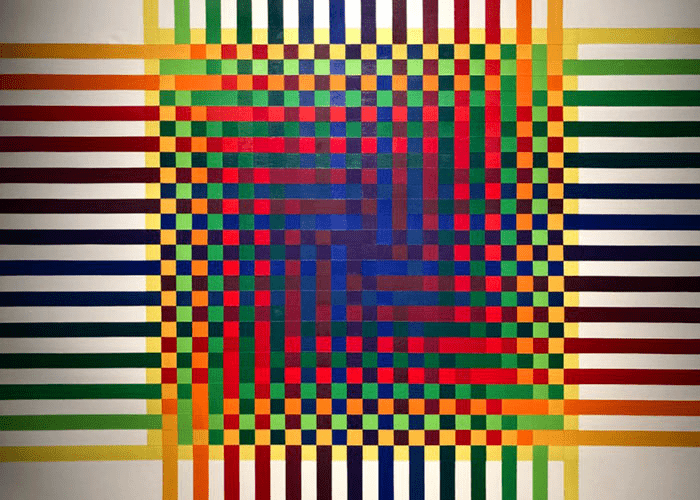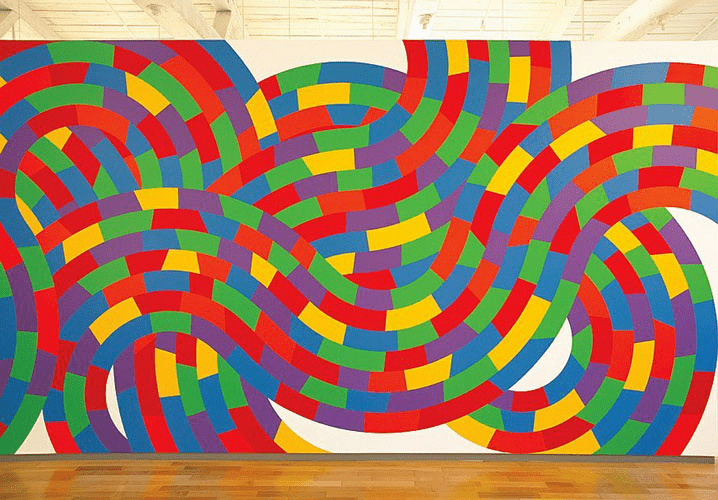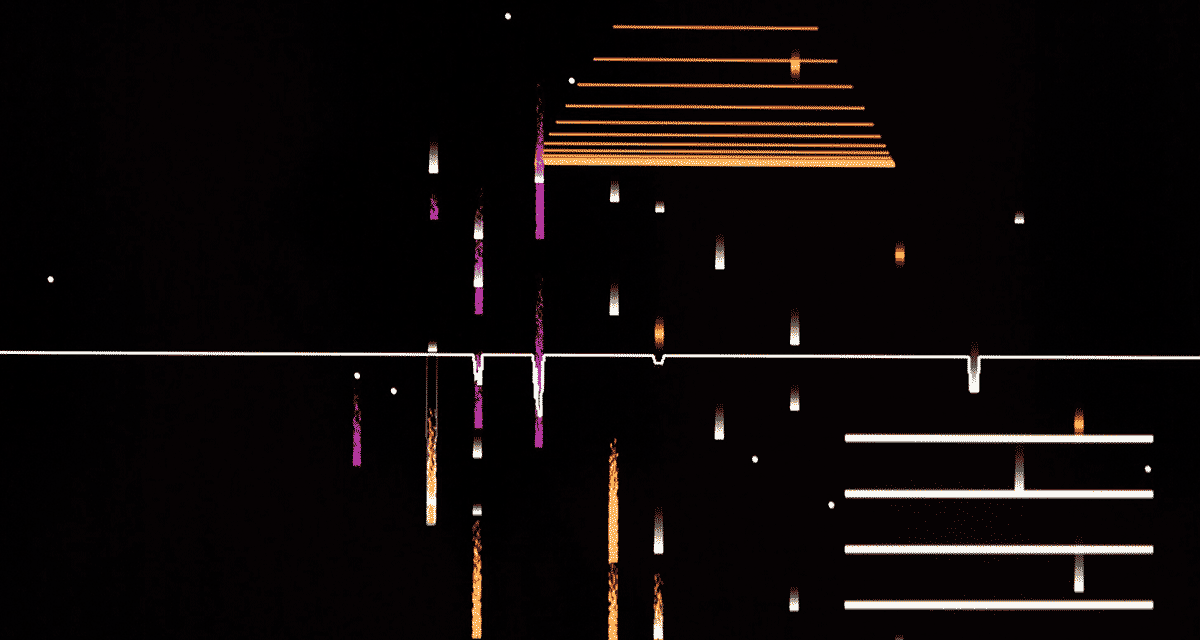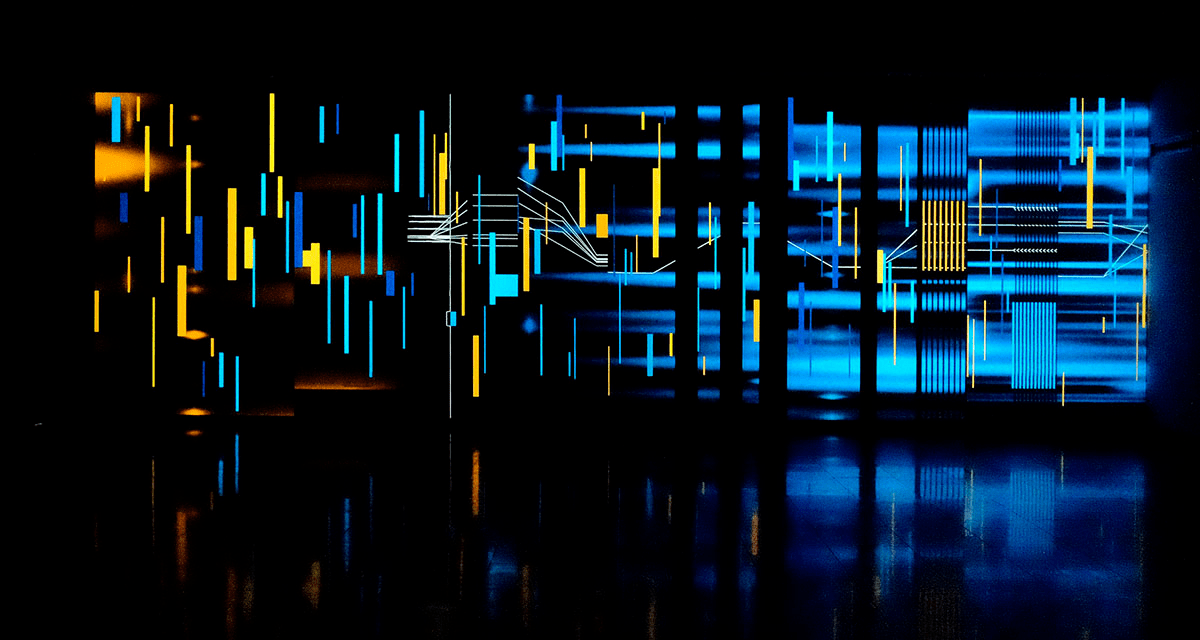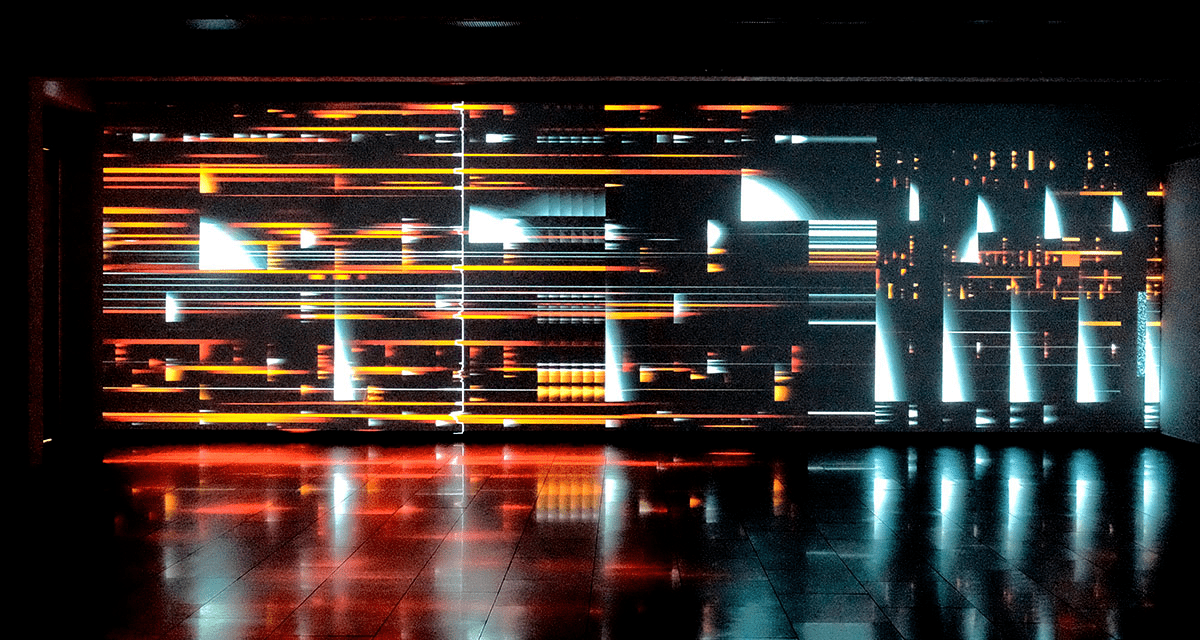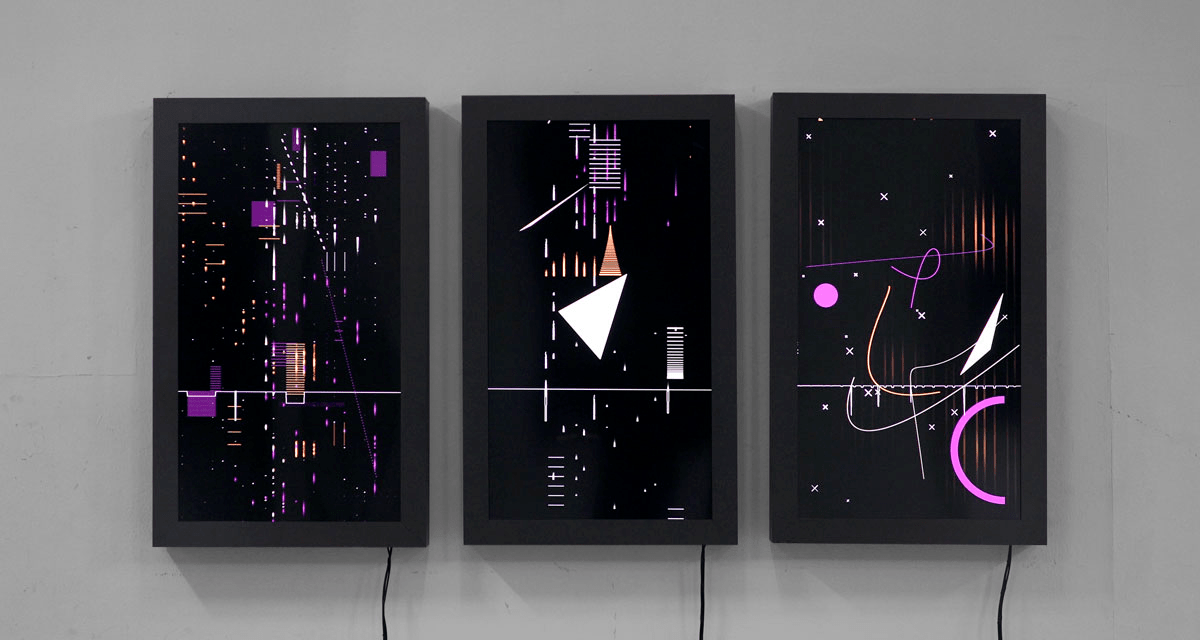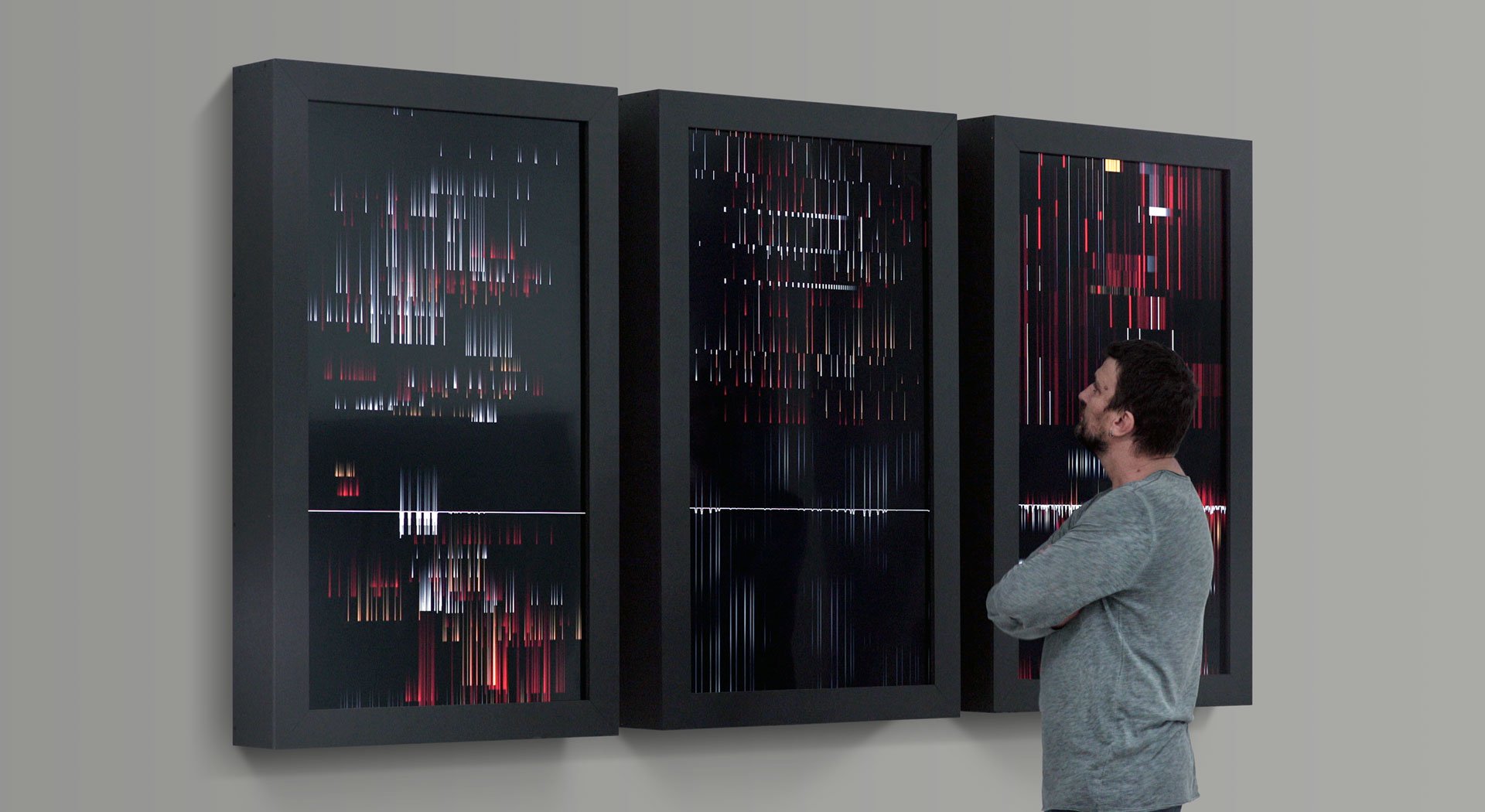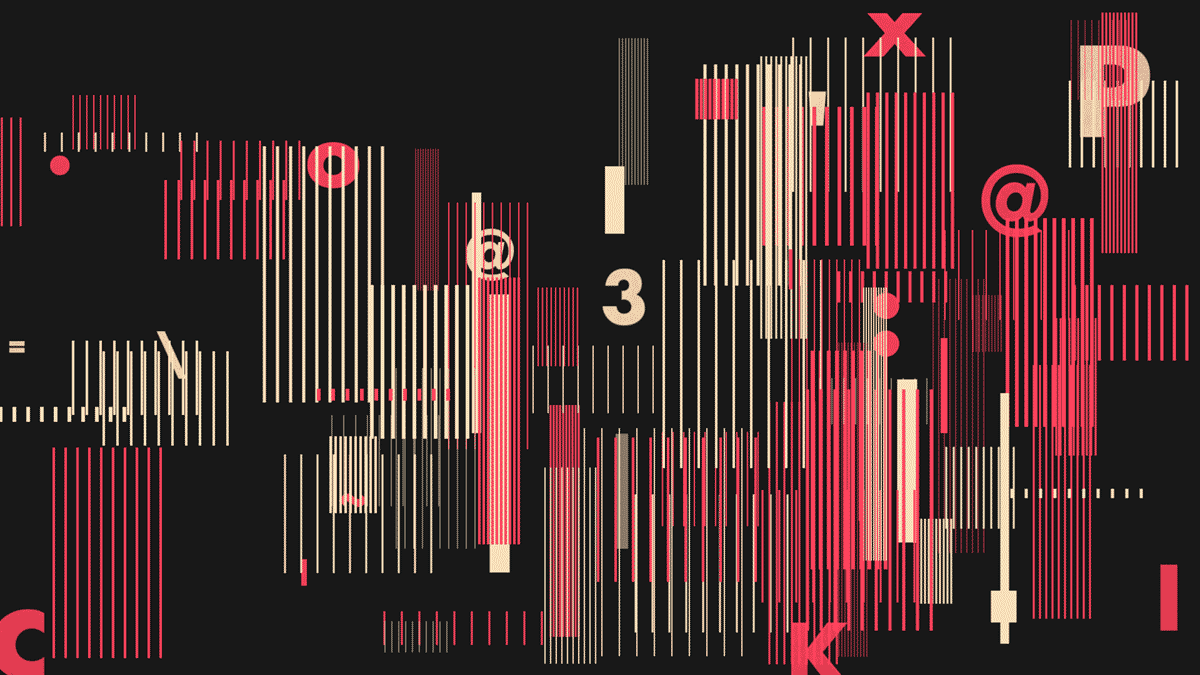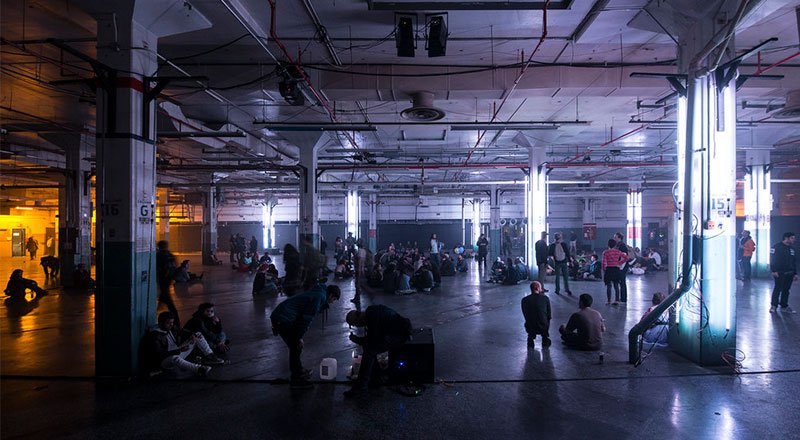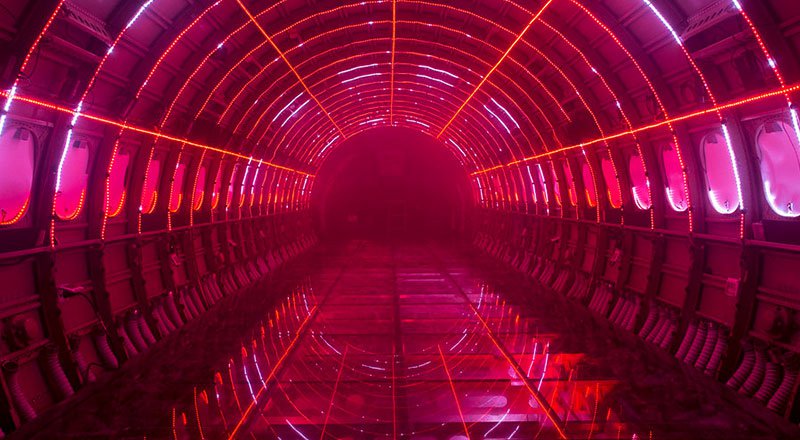It can self-generate infinite graphic scores driven by a set of rules based on probability and chance. Scores are transformed automatically into music using sound synthesis algorithms, blurring the lines between partiture and spectrogram.
The resulting images are framed in the tradition of graphic notation popular with 20th-century composers including John Cage, Iannis Xenakis, Karlheinz Stockhausen and Morton Feldman as a means of representation that released music from the rigid bounds of conventional pentagrams.
FORMS has been “playing” online uninterrupted for more than 2,000 hours, broadcasting its mesmerizing musical-visual output at twitch.
Following a well-deserved rest, and for the exhibition at Display, FORMS is back, this time as a group of instruments. A series of screens interpret one instrument each. Thanks to its networked brain, these instruments can coordinate with each other, each one playing its part in a real-time musical composition never to be repeated.
